The Traditional Khmer New Year in Cambodia
The Khmer New Year Festival (Choul Chnam Thmey), celebrated annually from April 13 to 15, is Cambodia's most significant and culturally rich holiday. Families come together to honor traditional cultural values and celebrate the New Year. If you want to experience Cambodia’s vibrant culture, the Khmer New Year festival is an incredible opportunity you should not miss!
Origin of the Khmer New Year Festival
The Khmer New Year (Choul Chnam Thmey) has a long and fascinating history, dating back centuries. Originally celebrated in November or December according to the lunar calendar, the festival was later shifted to April during the Angkor period. This change coincided with the completion of the rice harvest, allowing Cambodian farmers to take a break after a long year of hard work.
The festival is deeply intertwined with Cambodia's agricultural traditions. Kings such as Suryavarman II and Jayavarman VII were instrumental in moving the celebration to April, marking the start of the harvest season.
While initially influenced by Brahmanism, Khmer New Year gradually embraced Buddhist traditions, especially as Buddhism became more widespread in Cambodia. The festival was banned during the Khmer Rouge regime in the 1970s but was revived after the fall of the regime, evolving into a key symbol of Cambodia’s cultural identity.
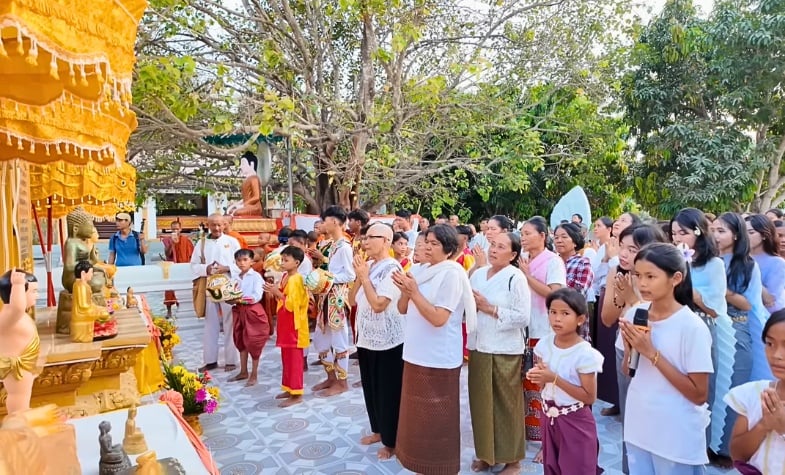
Traditional Activities During the Khmer New Year Festival
The Khmer New Year festival lasts for three days, with each day featuring distinct activities and customs. It blends religious rites, traditional games, and festive food, offering a complete experience of Cambodian culture and ethnic identity.
The Khmer New Year is filled with meaningful religious activities. On the first day, known as Maha Songkran, Cambodians prepare offerings like fruits and incense to welcome the new gods and seek blessings and protection for the coming year. Many families visit temples to pray and make offerings to monks.
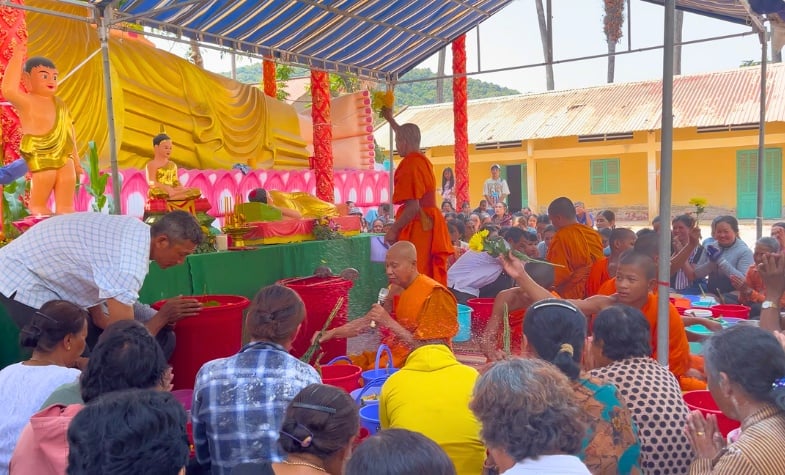
On the second day, called Wanabat, the focus shifts to charity. Cambodians often help the less fortunate and honor their ancestors by visiting monasteries. One significant tradition on this day is the building of small sand stupas, representing the sacred stupa of the Buddha, which symbolizes wishes for rain and blessings in the new year.
On the final day, Tngai Laeung Saka, the Pithi Srang Preah ceremony takes place. During this ritual, people bathe Buddha statues and elderly monks with fragrant water to express gratitude and wash away misfortunes from the old year. This day is also marked by family rituals, including seeking forgiveness and offering blessings to ancestors.
Traditional Games and Cuisine During the Khmer New Year
No Khmer New Year celebration is complete without traditional games and festive food. Folk games like Chol Chhoung, Leak Kanseng, and Bay Khom bring people together for fun, while providing a chance for the younger generation to meet and socialize. These games showcase the creativity and skills of the participants.
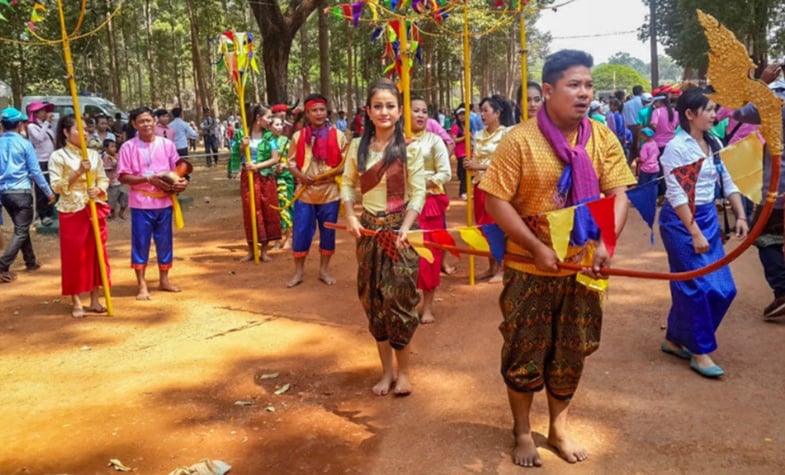
Cuisine also plays a significant role during the Khmer New Year. Traditional dishes such as Kralan (sticky rice cakes cooked in bamboo), Khmer curry, and Amok fish are enjoyed by families and symbolize prosperity and good fortune. These festive meals allow visitors to taste the unique flavors of Cambodia.
Traditional attire, including colorful outfits, is worn during the celebration, symbolizing respect for the culture and a fresh start full of hope and prosperity.
Must-Visit Locations During the Khmer New Year Festival
Khmer New Year is a time of lively and colorful celebrations across Cambodia, where sacred sites, historical landmarks, and temples become the center of cultural and spiritual activities. Angkor Wat, a UNESCO World Heritage site, attracts thousands of visitors during Khmer New Year. Here, Cambodians typically build small sand stupas within the temple grounds, symbolizing the sacred relics of the Buddha. The Royal Palace in Phnom Penh hosts grand celebrations with traditional dances, music, and food stalls, creating an atmosphere rich in Cambodian cultural identity. Siem Reap, with the Siem Reap Sangkranta Festival, features lively activities such as street markets, artistic performances, and cultural events, drawing large numbers of visitors.
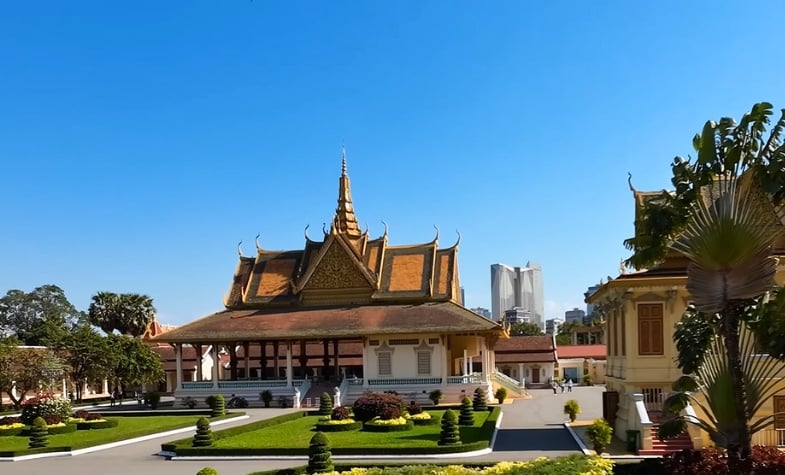
In addition, Battambang is another must-visit destination with boat races on the Sangker River, cultural performances, and street fairs, creating a festive atmosphere. Kampot, known for its temple ceremonies, water fights, and traditional Apsara dances, offers a cheerful and lively ambience throughout the Khmer New Year festival. These destinations not only provide opportunities to explore culture and history but also offer visitors a chance to experience the unique festive atmosphere of the Khmer New Year.
Tips for Tourists Attending the Khmer New Year Festival
If you’re planning to attend the Khmer New Year celebrations, here are some useful tips to help ensure a smooth and enjoyable experience:
Transportation: During the festival, free bus services are available between Phnom Penh and other provinces, but due to the high demand, it’s recommended to book your travel in advance. Premium bus companies such as CAT Mekong Express and Giant Ibis offer regular schedules but expect crowded conditions during peak times.
Accommodation: Khmer New Year is one of the busiest times for tourism in Cambodia, so it’s a good idea to book your hotel at least one week in advance. This is especially important in Siem Reap, where the festival is at its peak.
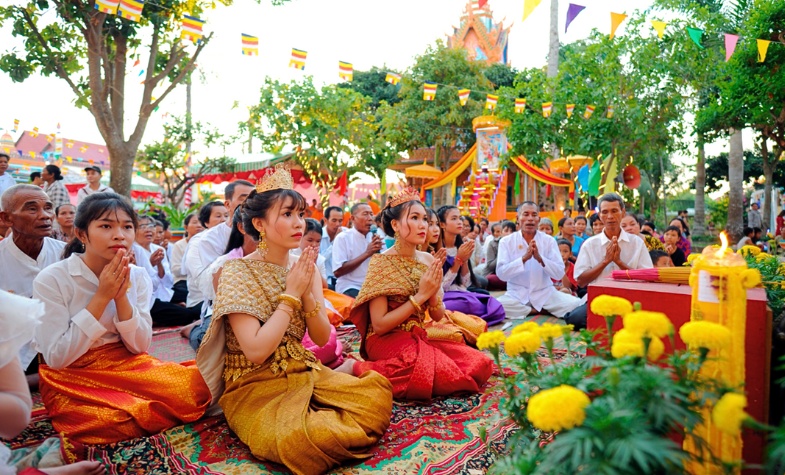
Cultural Etiquette:
-
Proper attire:When visiting temples, men should wear long pants and shirts, and women should avoid wearing short skirts or revealing clothing.
-
Cultural greetings: It's polite to greet others with a “Som Pas” the traditional Khmer greeting.
-
Temple etiquette: Always remove your shoes before entering temples or homes as a sign of respect.
-
Clothing for water activities: If you plan to participate in water games, wear comfortable, quick-drying clothes to stay comfortable throughout the activities.
With these tips, you can fully enjoy the Khmer New Year experience while respecting local traditions and customs.
The Khmer New Year is more than just a holiday; it’s a celebration of Cambodia’s vibrant culture, agricultural traditions, and Buddhist heritage. With its religious rituals, traditional games, and festive foods, the Khmer New Year offers a unique opportunity to experience Cambodia’s customs and history firsthand. Whether you’re visiting Angkor Wat, participating in cultural events in Siem Reap, or enjoying the community atmosphere, the Khmer New Year is an unforgettable experience that showcases the heart of Cambodian culture.
You may like our tours:
***
Travel Authentic Asia Company is your best choice for discovering the beauty of Southeast Asia. Our experienced and knowledgeable travel advisors are committed to helping you create a tailor-made tour and extraordinary experiences in this majestic region.
If you're looking for an authentic cultural experience, do not hesitate to contact Travel Authentic Asia to choose a Vietnam tour, Southeast Asia tour package or to customize your own style tour to South East Asia.

